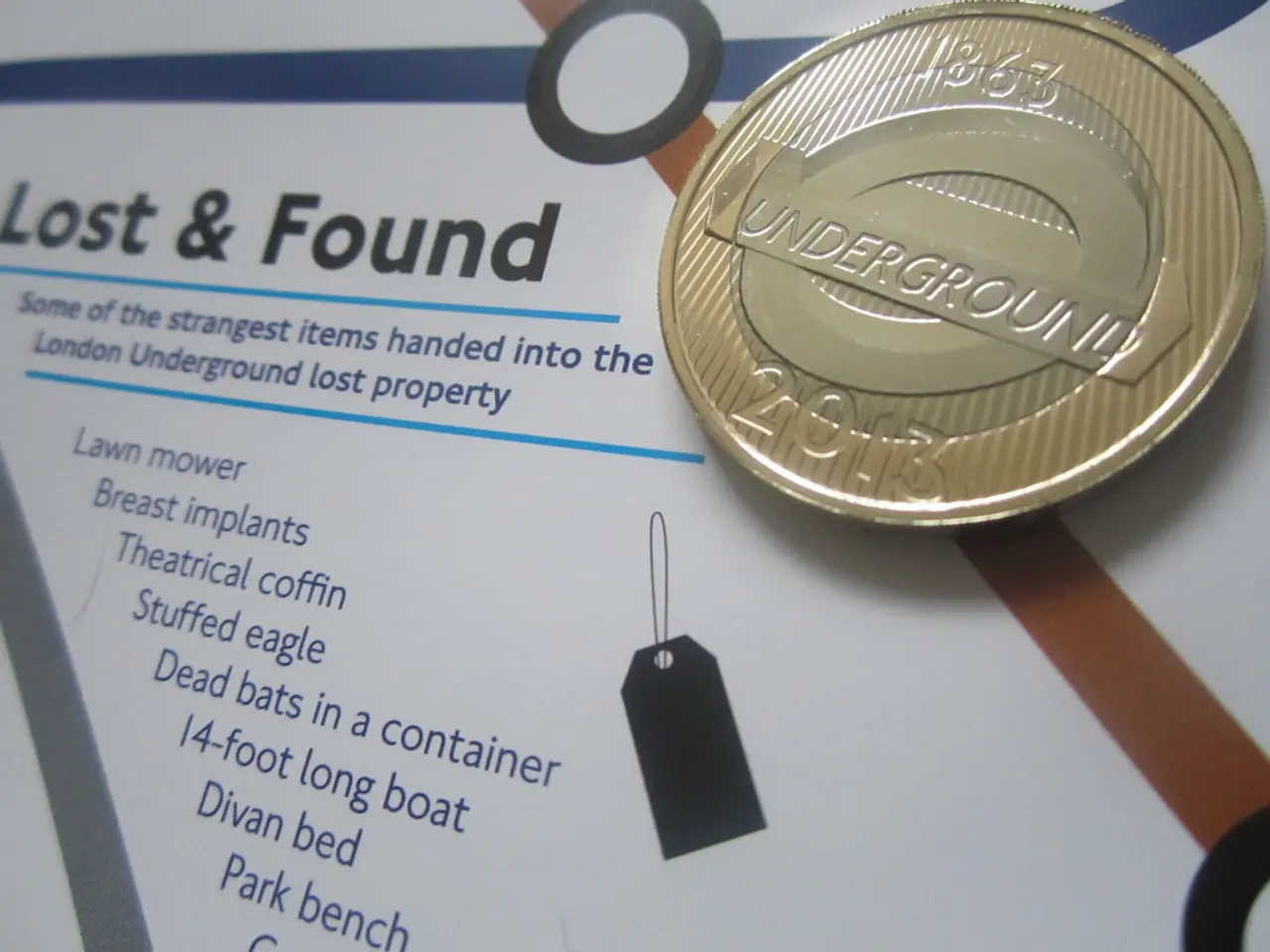Delving into the Realm of 3D Modeling: A Deep Dive into Digital Sculpting
Digital sculpting's meteoric rise in the art world
Digital sculpting has taken the art world by storm, changing the game for how artists create and manipulate three-dimensional artworks. The recent years have seen a massive increase in the use of digital sculpting tools and software, allowing artists to delve into new creative realms and build upon traditional sculpting techniques.
This revolution lets artists play with virtual clay, providing them with the flexibility and precision needed to bring their creative visions to life. The surge in digital sculpting's popularity is evident, as it has attracted artists from diverse disciplines such as traditional sculptors, illustrators, and concept artists. Furthermore, the rise of digital sculpting has opened doors to novel opportunities for these artists to exhibit their work to an expanded audience.
As technology progresses, digital sculptures can now be effortlessly shared and viewed online, accessing a global audience. This growth of the digital sculpting community has pushed the boundaries of what's possible in the digital realm, cementing digital sculpting as an integral component in today's contemporary art scene.
Essential tools for a digital sculpting mastery
- ZBrush: A digital sculpting powerhouse, ZBrush is renowned for its strong sculpting and painting capabilities, enabling artists to create highly detailed and intricate sculptures with ease.
- Mudbox: An intuitive digital sculpting software with a user-friendly interface, Mudbox offers various tools for artists to sculpt and paint their creations in a virtual environment.
- Blender: A versatile open-source 3D creation suite, Blender boasts an array of sculpting tools. These tools can work in conjunction with the suite's other features, giving artists a comprehensive set of tools for digital sculpting adventures. Moreover, the advent of VR technology has given rise to tools like Oculus Medium and Google Tilt Brush, offering artists an immersive and intuitive way to sculpt in a virtual space. These tools and software have significantly shaped the landscape of digital sculpting, providing artists with the means to make their creative dreams a reality.
The basics of digital sculpting uncovered
Digital sculpting revolves around the use of software and tools to create three-dimensional artworks in a virtual environment. Unlike traditional sculpting, which involves working with physical materials such as clay or stone, digital sculpting enables artists to use 'virtual clay' with digital brushes and tools.
Understanding digital brushes and tools is crucial for digital sculpting success, as they allow artists to sculpt, carve, and paint with precision and control. Digital brushes can mimic the effects of traditional sculpting tools, providing artists with a vast variety of textures and details in their sculptures. Furthermore, artists must also take factors such as lighting, composition, and anatomy into account when creating their digital sculptures, just as traditional sculptors would.
By mastering these fundamental concepts, artists can unlock the full potential of digital sculpting, creating breathtaking masterpieces.
Achieving digital sculpting success: Techniques and Tips
Creating striking digital sculptures requires a blend of technical prowess and artistic vision. Here are some valuable techniques and tips for achieving digital sculpting success:
- Use reference materials: Photographs and 3D scans can provide artists with valuable insights into anatomy, composition, and texture, helping artists to craft sculptures that are both accurately detailed and visually appealing.
- Learn anatomy: A strong understanding of anatomy is essential for digital sculpting accuracy, allowing artists to create lifelike characters and creatures.
- Experiment with layers and subdivisions: Layers provide artists with a non-destructive way to work, making it easier to experiment with different ideas without affecting the underlying structure. Subdivisions enable artists to increase the level of detail in their sculptures by adding more geometry to the model.
The transformative power of 3D printing in digital sculpting
3D printing has emerged as an effective tool for turning digital sculptures into tangible objects. This technology allows artists to print physical replicas of their digital sculptures while exploring fresh ways to showcase and share their work. 3D printing also empowers artists to create custom merchandise, offering them new opportunities to monetize their creations. Furthermore, 3D printing is employed in various industries, including film, gaming, and product design, where it's used for creating prototypes, props, and concept models. As 3D printing technology advances, we can expect to witness even more exciting applications for digital sculpting, ranging from grand-scale installations to custom collectibles.
Digital sculpting shines in the animation and gaming industries
The Animation Industry
In animation, digital sculpting is often utilized in the character design process, aiding artists in creating detailed maquettes that serve as references for animators. These maquettes help animators to visualize the three-dimensional form of characters and maintain consistency in their movements throughout a production.
Visual Effects and Gaming
Digital sculpting also plays a significant role in creating highly detailed models for visual effects (VFX) work, such as constructing realistic creatures or environments that seamlessly blend with live-action footage. In the gaming industry, digital sculpting is employed to create assets for games – characters, weapons, vehicles, and environmental elements. Digital sculptors collaborate closely with game developers to turn their concepts into three-dimensional characters, ensuring that the final assets meet the technical requirements of game engines while also being visually impressive.
Adorning reality with digital sculpting’s realism in gaming
The use of digital sculpting in gaming has led to a dramatic leap in the level of realism seen in modern games, captivating players by immersing them in richly detailed worlds previously only imagined.
The future of digital sculpting: Innovations and trends
The future of digital sculpting is promising, as technology continues to evolve at a frenetic pace. Here are some forecasted trends that will shape the future of digital sculpting:
- Integration of AI: AI will increasingly influence digital sculpting by automating time-consuming tasks and providing intelligent suggestions to artists as they work on their sculptures. This will result in greater efficiency, productivity, and creative freedom for digital sculptors.
- Expansion of VR technology: VR offers artists an immersive way to interact with their sculptures in a virtual space, providing a more intuitive and tactile experience compared to traditional input devices. As VR technology advances and becomes more accessible, it is expected to see an increase in the use of VR sculpting tools by artists spanning diverse disciplines.
- Advancements in 3D printing technology: As 3D printers become more affordable and capable, we can anticipate new applications for 3D printed sculptures across various industries. From large-scale installations to custom collectibles, 3D printing opens up endless possibilities for bringing digital sculptures into the physical world.
In conclusion, digital sculpting has become a critical part of the contemporary art scene, offering artists fresh avenues to explore their creativity and surpass traditional sculpting techniques. With a myriad of tools and software available for digital sculpting, artists now have powerful resources at their disposal for turning their creative ideas into three-dimensional masterpieces.
As technology continues to innovate, we can expect to witness even more fascinating applications for digital sculpting across various industries – from animation and gaming to product design and beyond. The future of digital sculpting is exciting, as new innovations and trends shape this dynamic field.
If you'd like to add some color to your workspace, our article "How to Create a Vibrant and Inviting Workspace" on our platform offers some useful tips and ideas to help you choose the best colors for your workspace, fostering greater productivity and creativity. Check it out for some inspiration! https://our website/2024/07/04/how-to-create-a-colorful-and-inviting-workspace/
FAQs
- What is digital sculpting?: Digital sculpting is the process of creating three-dimensional artwork using digital tools and software. It involves manipulating virtual clay and creating intricate sculptures through the use of digital tools and brushes.
- What software is used for digital sculpting?: There are numerous software options available for digital sculpting, including popular ones like ZBrush, Mudbox, and Blender. These programs offer a wide range of tools and features for artists to create and manipulate digital sculptures.
- What are the advantages of digital sculpting over traditional sculpting?: Digital sculpting provides several advantages over traditional sculpting, including the ability to easily undo and redo actions, work with multiple materials and textures, and quickly make changes to the sculpture without the need for physical tools.
- Can digital sculptures be 3D printed?: Yes, digital sculptures can be 3D printed. Once a digital sculpture is created, it can be exported as a 3D file and sent to a 3D printer for physical production.
- Is digital sculpting only used for creating art?: While digital sculpting is widely used for creating art, it is also employed in various industries such as film, video games, animation, and product design. It allows for the creation of detailed and realistic 3D models for a wide range of purposes.
- The integration of artificial intelligence in digital sculpting tools is poised to revolutionize the creative process, automating time-consuming tasks and offering intelligent suggestions to artists.
- The growing popularity of artificial intelligence and its seamless compatibility with digital sculpting software are expected to foster a greater convergence between art and technology, blurring the lines between the two domains.




